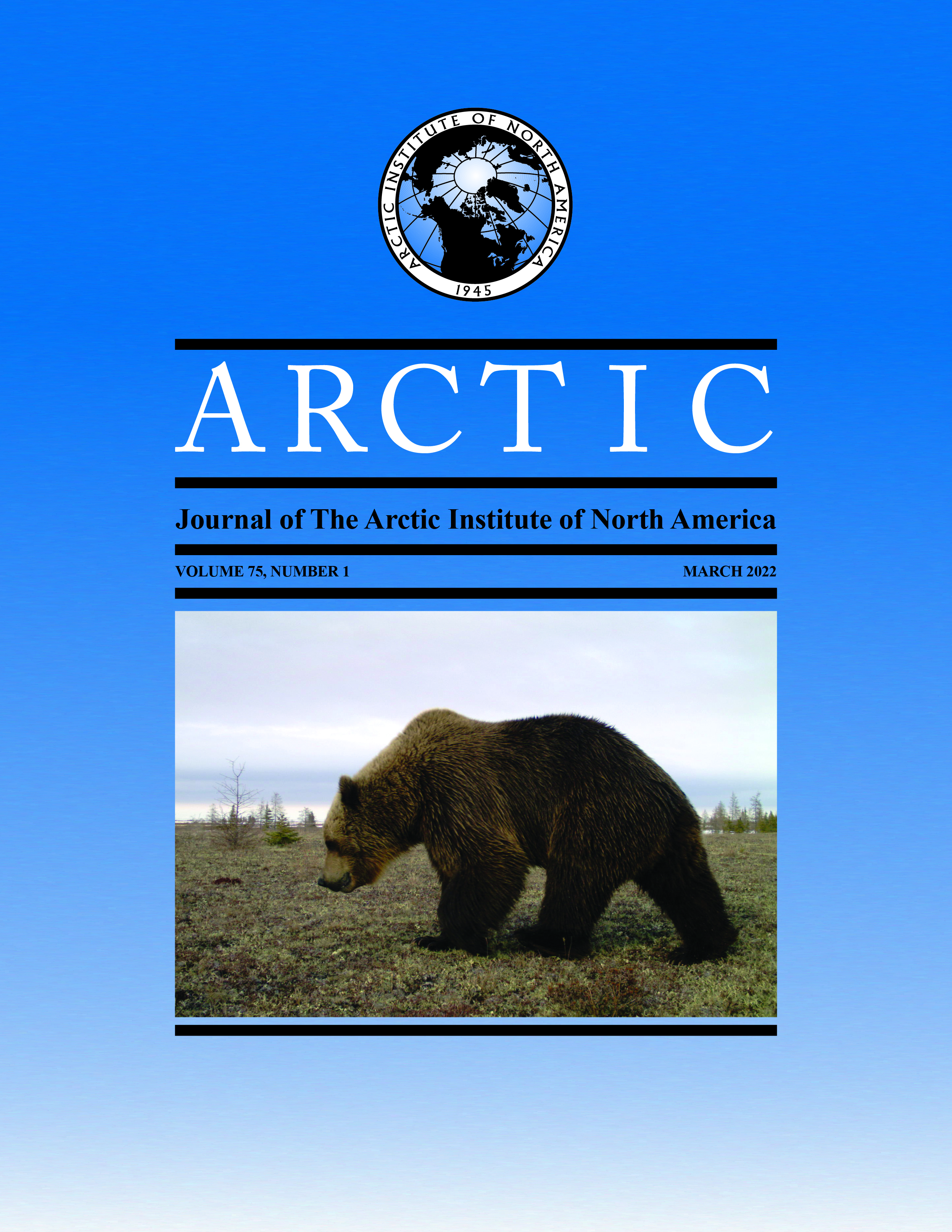Improving Peary Caribou Presence Predictions in MaxEnt Using Spatialized Snow Simulations
DOI:
https://doi.org/10.14430/arctic74868Keywords:
Arctic; climate change; MaxEnt; Peary caribou; rain-on-snow; snow density; snow depth; locked pastures; SNOWPACK; species distribution modellingAbstract
The Arctic has warmed at twice the global average over recent decades, which has led to a reduction in the spatial extent and mass balance of snow. The increase in occurrence of winter extreme events such as rain-on-snow, blizzards, and heat waves has a significant impact on snow thickness and density. Dense snowpack conditions can decrease or completely prevent foraging by Peary caribou (Rangifer tarandus pearyi) by creating “locked pastures,” a situation where forage is present but not accessible under snow or ice. Prolonged and severe weather events have been linked to poor body condition, malnutrition, high adult mortality, calf losses, and major population die-offs in Peary caribou. Previous work has established the link between declines in Peary caribou numbers in the Canadian Arctic Archipelago and snow conditions, however these efforts have been limited by the quality and resolution of data describing snow physical properties in the Arctic. Here, we 1) investigate whether a snow model adapted for the Antarctic (SNOWPACK) can produce snow simulations relevant to Canadian High Arctic conditions, and 2) test snow model outputs to determine their utility in predicting Peary caribou occurrence with MaxEnt modelling software. We model Peary caribou occurrence across three seasons: July – October (summer forage and rut), November – March (fall movement and winter forage), and April – June (spring movement and calving). Results of snow simulations using the Antarctic SNOWPACK model demonstrated that both top and bottom density values were greatly improved when compared to simulations using the original version developed for alpine conditions. Results were also more consistent with field measurements using the Antarctic model, though it underestimated the top layer density compared to on-site measurements. Modelled outputs including snow depth and CT350 (cumulative thickness of snow layers surpassing the critical density value of 350 kg·m-3; a density threshold relevant to caribou) proved to be important predictors of Peary caribou space use in each of the top seasonal models along with vegetation and elevation. All seasonal models were robust in that they were able to predict reasonably well the occurrence of Peary caribou outside the period used to develop the models. This work highlights the need for continued monitoring of snow conditions with climate change to understand potential impacts to the species’ distribution.
Downloads
Downloads
Published
Issue
Section
License
Copyright (c) 2022 ARCTIC

This work is licensed under a Creative Commons Attribution 4.0 International License.


